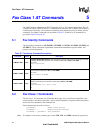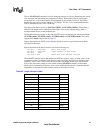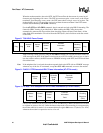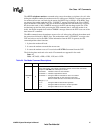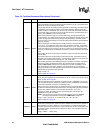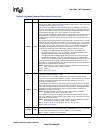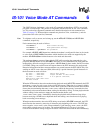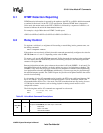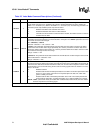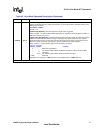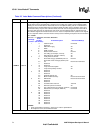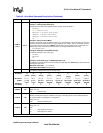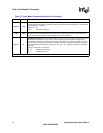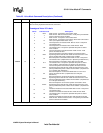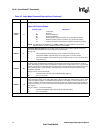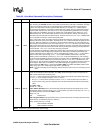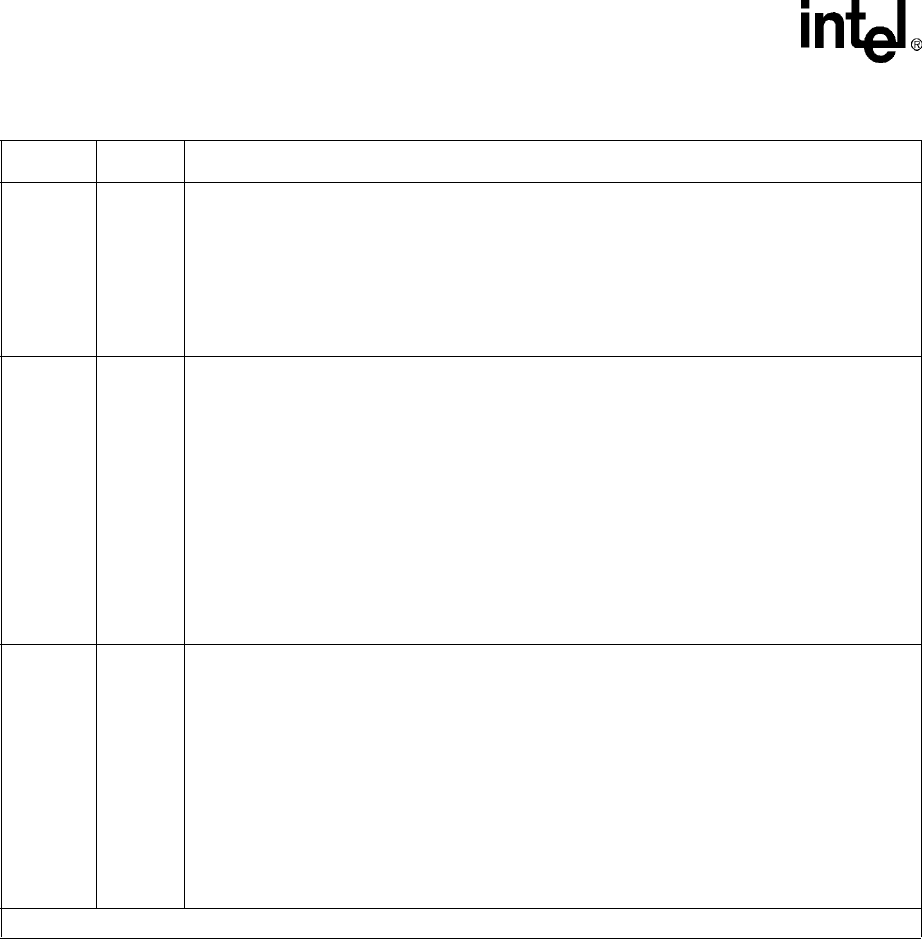
72 536EX Chipset Developer’s Manual
Intel Confidential
IS-101 Voice Mode AT Commands
+FLO=m 1
Flow Control Select: This command allows the DTE to identify and select the types of flow control
used. DCEs using the IS-101 standard must support in-band XON/XOFF flow control. XON is the
ASCII <DCI> character (11h); XOFF is the ASCII <DC3> character (13h). The DCE may provide ITU-Ts
V.24 CTS (circuit 106) and RTS (circuit 133) for flow control.
0 Disables XON/XOFF and CTS/RTS flow control
1* Enables XON/XOFF flow control in either direction
2 The DTE uses ITU-Ts RTS to control flow to the modem; the modem uses ITU-T CTS to
control flow to the DTE.
+VBT=m see ‘m’
Buffer Threshold Setting: This command specifies the flow control assert and deassert points inside
the DCE’s internal transmit buffer. The internal buffer is 512 bytes. The +VBT=m parameters are fixed
in firmware and cannot be changed.
m = <deassert>, <assert>
Defaults: <deassert> = 192, <assert> = 320
<assert>: This parameter stops data transfer from the DTE when the number of bytes in the buffer
reaches the lower number of the range specified by the <assert> parameter. So that no data is lost
before the modem stops the flow of data, the <assert> parameter allows more data to enter the buffer
until it reaches the larger number in its range.
Range: <assert> = 192
<deassert>: This parameter starts data transfer from the DTE after the number of bytes in the transmit
buffer falls below the <deassert> value.
Range: <deassert> = 320
+VCID=m 0
Caller ID Selection: This command controls the reporting and presentation of data in the ICLID
(Incoming Call Line ID) data format used by the Caller ID services in the United States and Canada. At
a minimum, the data sent to the DCE includes the date, time, and the caller’s telephone number. Caller
ID information is sent to the DTE during the first and second ring signals when the modem is in voice,
data, or fax mode.
0* Disables Caller ID
1 Enables Caller ID with formatted presentation to the DTE. The modem presents the data
items in a <Tag><Value> pair format. The expected pairs are data, time, caller code
(phone number), and name.
2 Enables Caller ID with unformatted presentation to the DTE. The modem presents the
entire packet of information, excluding the leading Us, in ASCII-printable hex numbers.
NOTE: If S0=1 (auto-answer mode) and Caller ID is enabled in data modem mode, then the modem
answers only after the second ring signal.
Table 25. Voice Mode Command Descriptions (Continued)
Command Default Description
NOTE: An asterisk (*) denotes the factory-default setting.



